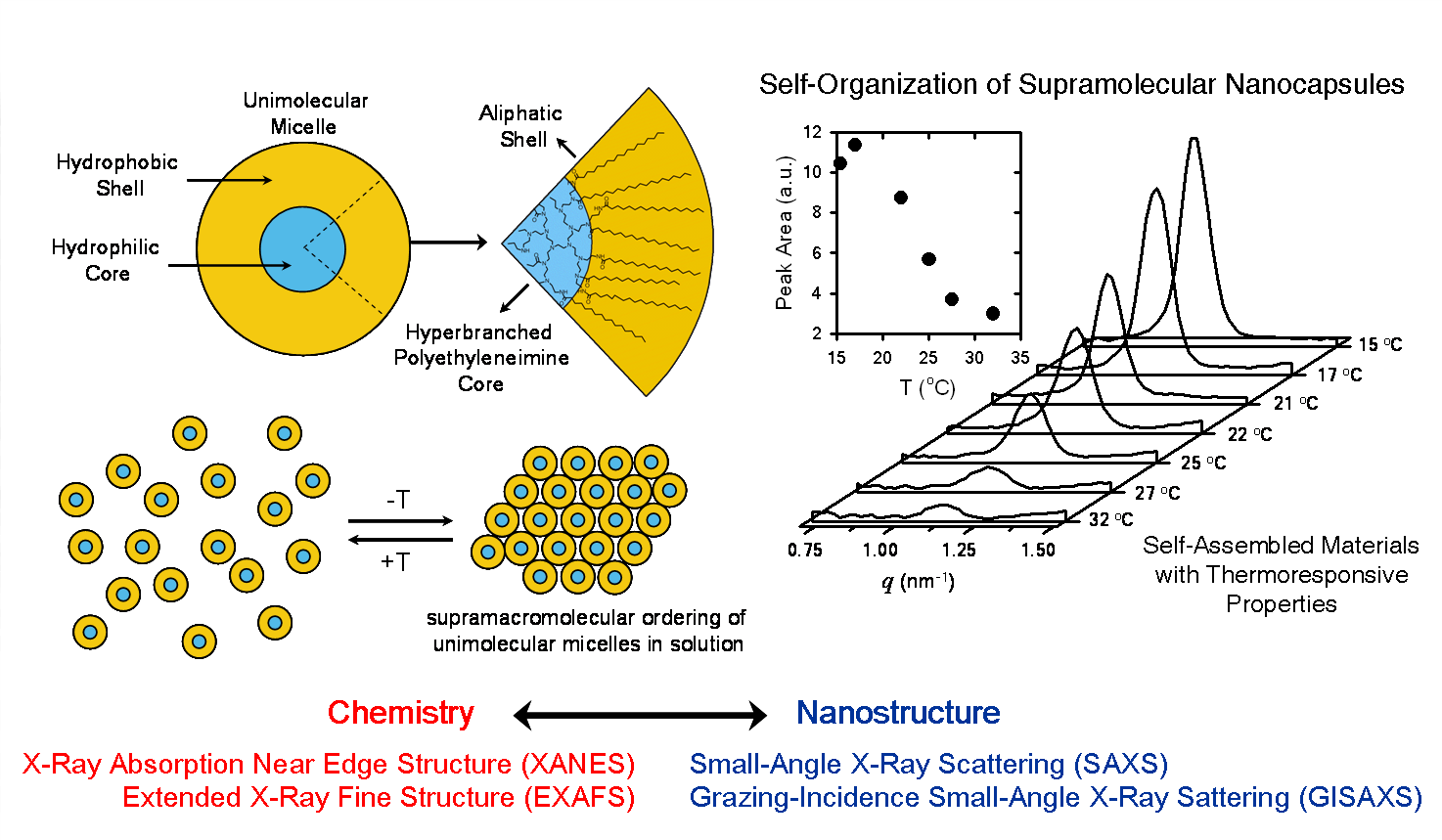Synchrotron radiation allows an exhaustive characterization of the structure, chemical nature and dynamics of materials. In this sense our lab exploits a wide range of methods, from small angle scattering up to spectroscopic methods, to gain exceptional insight into the physicochemical properties of materials and address a large variety of questions concerning the microstructure, dynamics, self-assembly, structural kinetics, chemical transformations and mesoscale organization of complex and nanostructured materials (polymers, colloids, surfactants, etc.) in bulk, at surfaces as well as in confined geometries.
Our synchrotron-based experimental activities are regularly performed at the Laboratório Nacional de Luz Síncrotron (LNLS, Campinas – Brazil) and involve in situ investigations of material processing, structural dynamics of supramolecular assemblies, structure and dynamics in thin hybrid films, and structural and chemical characterization of metal-organic frameworks, among others.
We typically employ a variety of techniques and sample environments for the study and analysis of surfaces, near-surface structures and buried interfaces on the atomic to nanometer length scales.
Synchrotron-based techniques currently used at the Soft Matter Laboratory:
- Small- and wide-angle X-ray scattering (SAXS/WAXS)
- Grazing-incidence X-ray diffraction (GID) and small-angle scattering (GISAXS)
- X-ray photoelectron spectroscopy (XPS)
- X-ray reflectometry (XRR)
- X-ray Absorption Near Edge Structure Spectroscopy (XANES).
- Extended X-Ray Absorption Fine Structure Spectroscopy (EXAFS)



